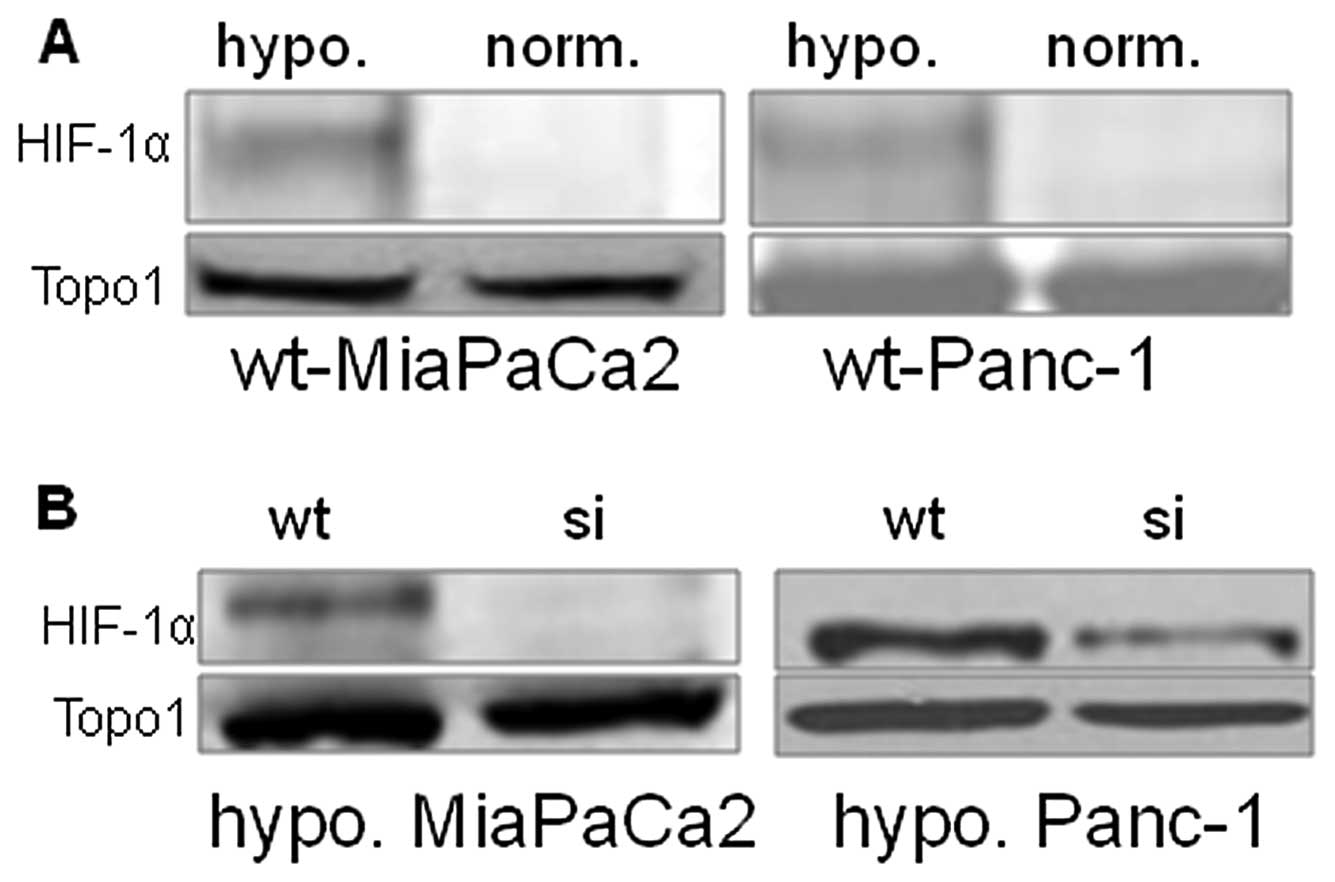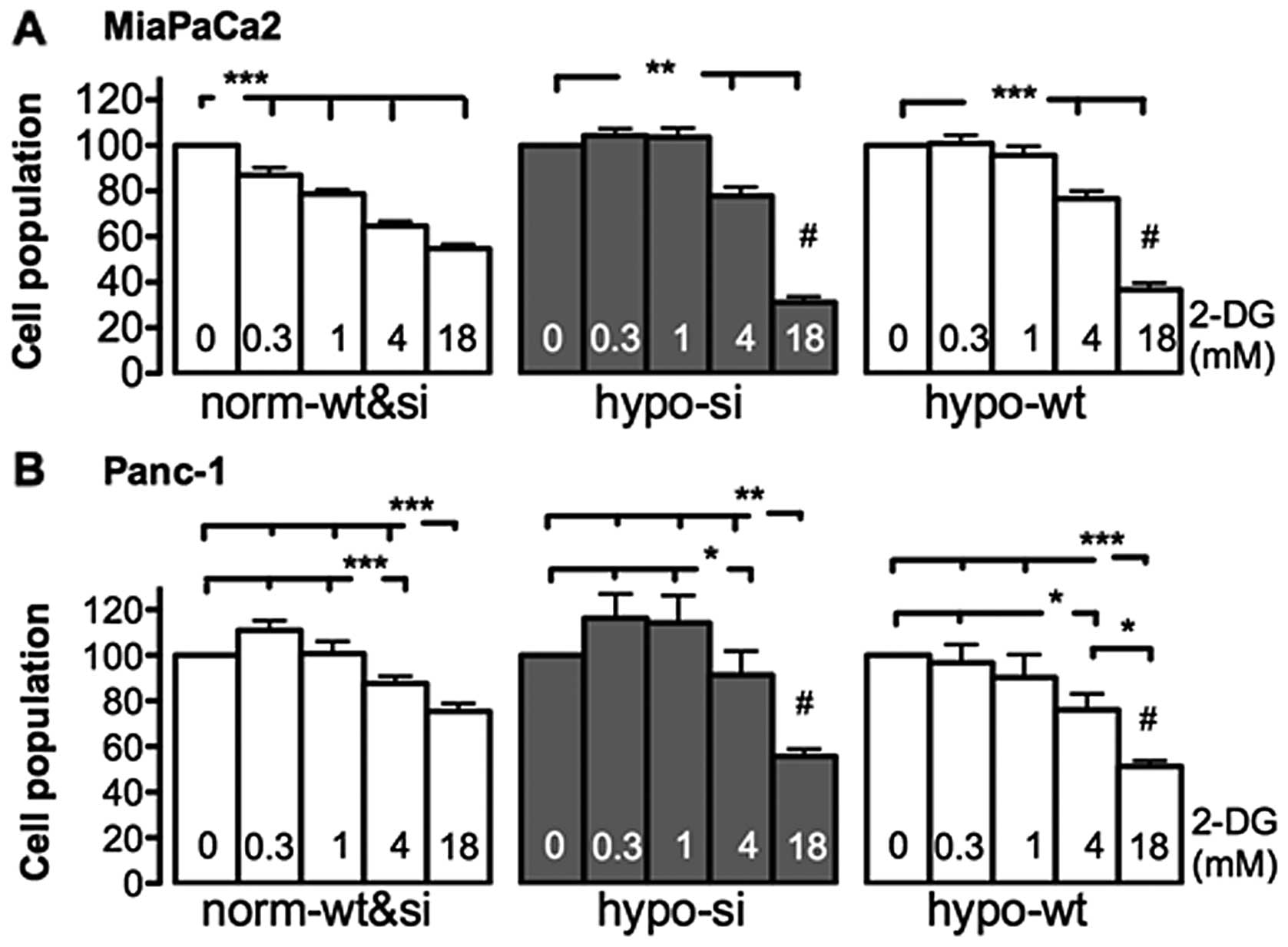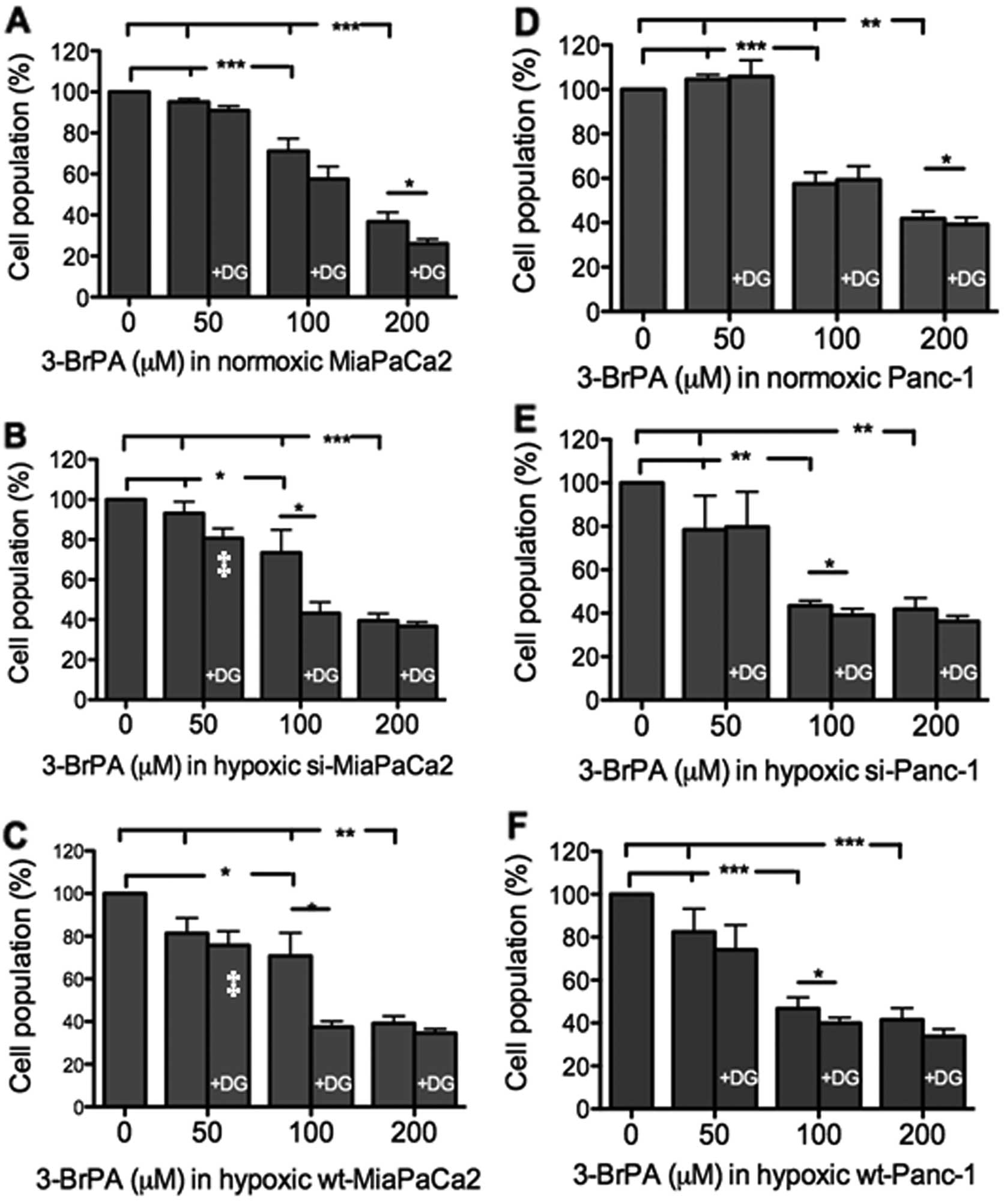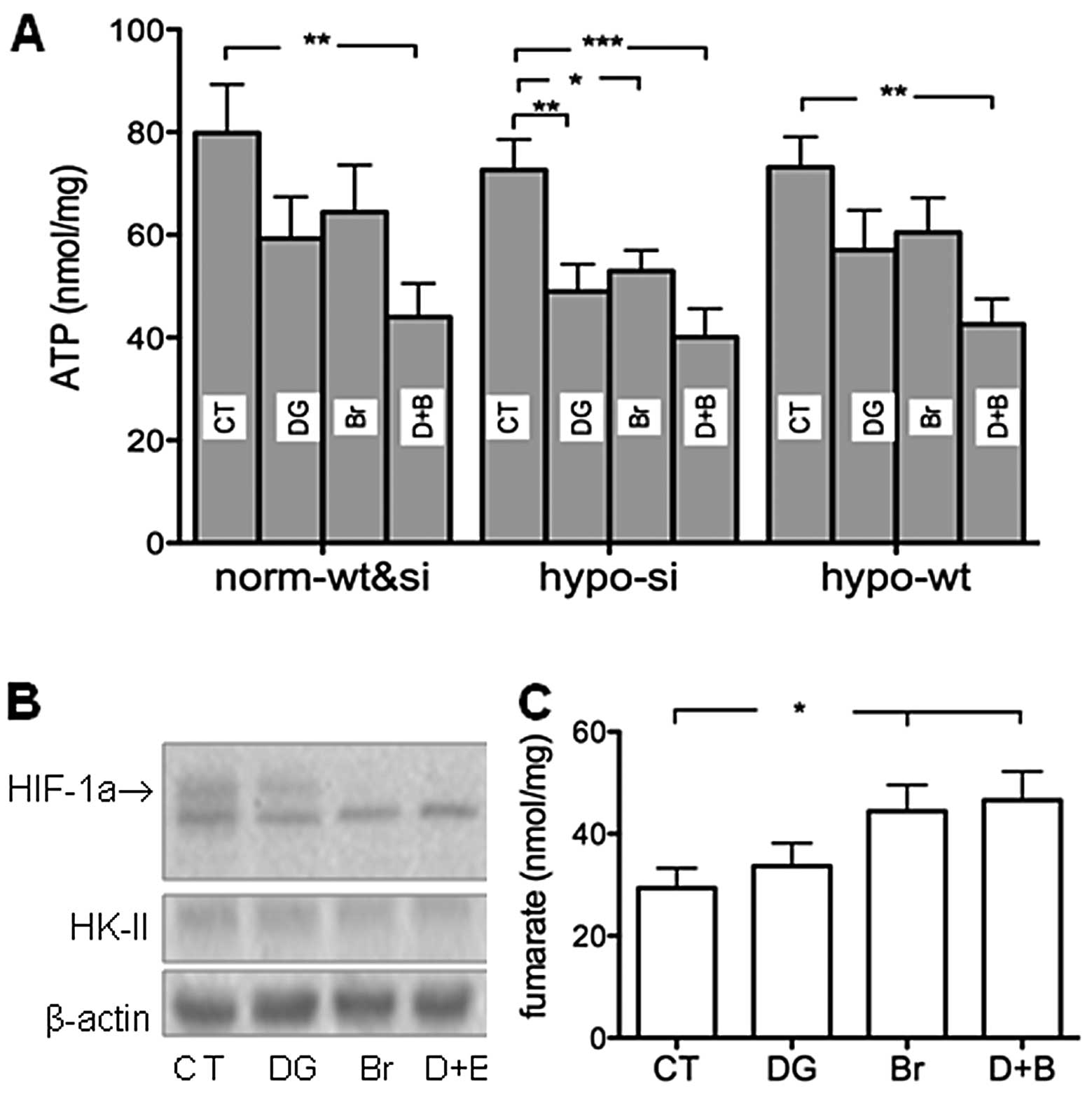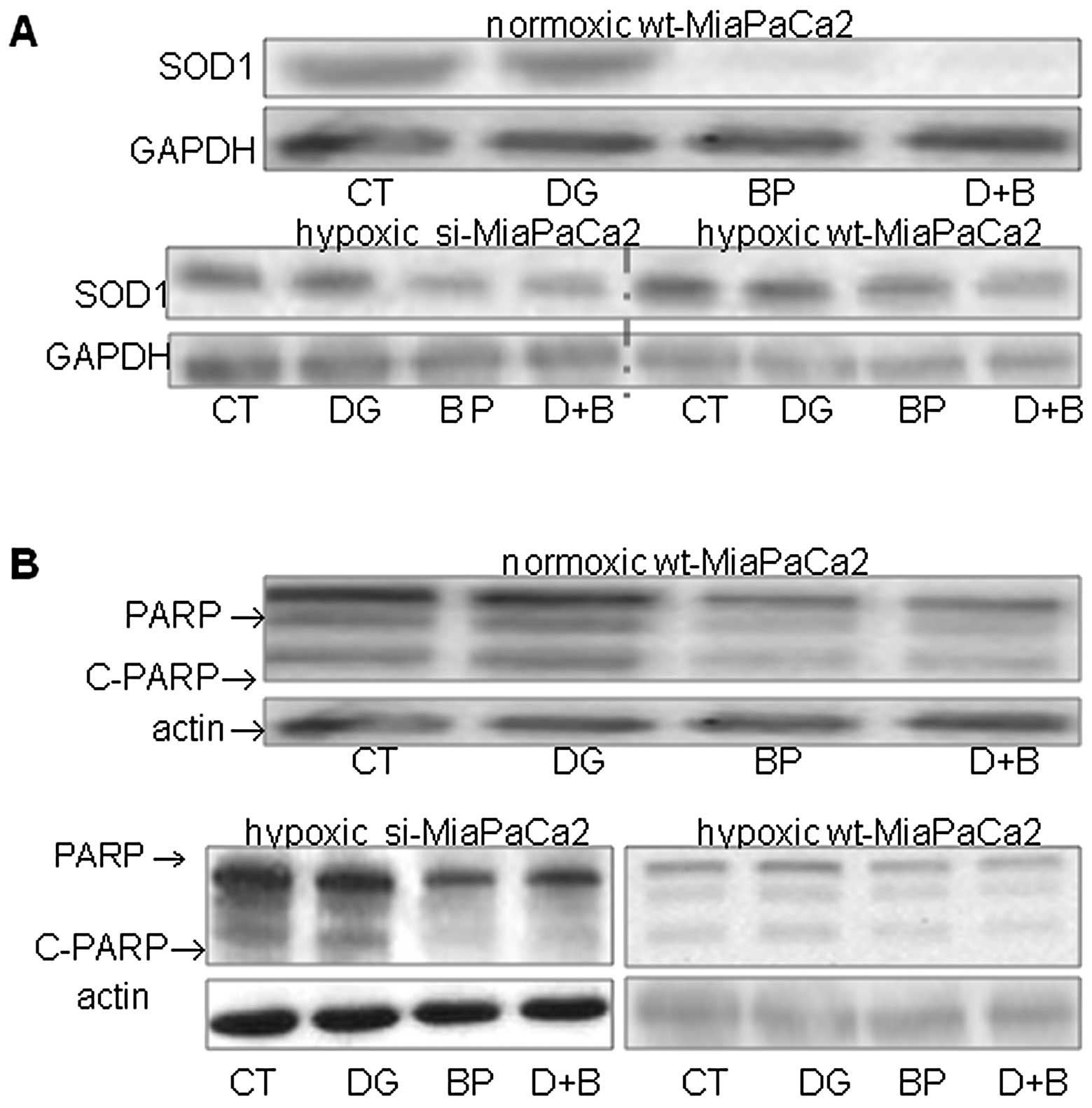|
1
|
Folkman J: Tumor angiogenesis: therapeutic
implications. N Engl J Med. 285:1182–1186. 1971. View Article : Google Scholar : PubMed/NCBI
|
|
2
|
Koong AC, Mehta VK, Le QT, et al:
Pancreatic tumors show high levels of hypoxia. Int J Radiat Oncol
Biol Phys. 48:919–922. 2000. View Article : Google Scholar : PubMed/NCBI
|
|
3
|
Erler JT, Cawthorne CJ, Williams KJ, et
al: Hypoxia-mediated down-regulation of Bid and Bax in tumors
occurs via hypoxia-inducible factor 1-dependent and -independent
mechanisms and contributes to drug resistance. Mol Cell Biol.
24:2875–2889. 2004. View Article : Google Scholar : PubMed/NCBI
|
|
4
|
Brown JM, Diehn M and Loo BW Jr:
Stereotactic ablative radiotherapy should be combined with a
hypoxic cell radiosensitizer. Int J Radiat Oncol Biol Phys.
78:323–327. 2010. View Article : Google Scholar : PubMed/NCBI
|
|
5
|
Warburg O: On the origin of cancer cells.
Science. 123:309–314. 1956. View Article : Google Scholar : PubMed/NCBI
|
|
6
|
Zhong H, De Marzo AM, Laughner E, et al:
Overexpression of hypoxia-inducible factor 1alpha in common human
cancers and their metastases. Cancer Res. 59:5830–5835.
1999.PubMed/NCBI
|
|
7
|
Semenza GL and Wang GL: A nuclear factor
induced by hypoxia via de novo protein synthesis binds to the human
erythropoietin gene enhancer at a site required for transcriptional
activation. Mol Cell Biol. 12:5447–5454. 1992.
|
|
8
|
Salceda S and Caro J: Hypoxia-inducible
factor 1alpha (HIF-1alpha) protein is rapidly degraded by the
ubiquitin-proteasome system under normoxic conditions. Its
stabilization by hypoxia depends on redox-induced changes. J Biol
Chem. 272:22642–22647. 1997. View Article : Google Scholar
|
|
9
|
Fukuda R, Hirota K, Fan F, et al:
Insulin-like growth factor 1 induces hypoxia-inducible factor
1-mediated vascular endothelial growth factor expression, which is
dependent on MAP kinase and phosphatidylinositol 3-kinase signaling
in colon cancer cells. J Biol Chem. 277:38205–38211. 2002.
View Article : Google Scholar
|
|
10
|
Wang F, Li SS, Segersvärd R, et al:
Hypoxia inducible factor-1 mediates effects of insulin on
pancreatic cancer cells and disturbs host energy homeostasis. Am J
Pathol. 170:469–477. 2007. View Article : Google Scholar : PubMed/NCBI
|
|
11
|
Natsuizaka M, Ozasa M, Darmanin S, et al:
Synergistic up-regulation of Hexokinase-2, glucose transporters and
angiogenic factors in pancreatic cancer cells by glucose
deprivation and hypoxia. Exp Cell Res. 313:3337–3348. 2007.
View Article : Google Scholar : PubMed/NCBI
|
|
12
|
Mathupala SP, Ko YH and Pedersen PL:
Hexokinase-2 bound to mitochondria: cancer’s stygian link to the
‘Warburg Effect’ and a pivotal target for effective therapy. Semin
Cancer Biol. 19:17–24. 2009.
|
|
13
|
Kirito K, Hu Y and Komatsu N: HIF-1
prevents the overproduction of mitochondrial ROS after cytokine
stimulation through induction of PDK-1. Cell Cycle. 8:2844–2849.
2009. View Article : Google Scholar : PubMed/NCBI
|
|
14
|
Kurtoglu M, Maher JC and Lampidis TJ:
Different toxic mechanisms of 2-deoxy-D-glucose versus
2-fluorodeoxy-D-glucose in hypoxic and normoxic tumor cells.
Antioxid Redox Signal. 9:1383–1390. 2007. View Article : Google Scholar : PubMed/NCBI
|
|
15
|
Maher JC, Savaraj N, Priebe W, et al:
Differential sensitivity to 2-deoxy-D-glucose between two
pancreatic cell lines correlates with GLUT-1 expression. Pancreas.
30:e34–e39. 2005. View Article : Google Scholar : PubMed/NCBI
|
|
16
|
Wangpaichitr M, Savaraj N, Maher J, et al:
Intrinsically lower AKT, mTOR and HIF activity correlates with
increased sensitivity to 2-deoxy-D-glucose under hypoxia in lung
cancer cell lines. Mol Cancer Ther. 7:1506–1513. 2008. View Article : Google Scholar : PubMed/NCBI
|
|
17
|
Maher JC, Wangpaichitr M, Savaraj N, et
al: Hypoxia-inducible factor-1 confers resistance to the glycolytic
inhibitor 2-deoxy-D-glucose. Mol Cancer Ther. 6:732–741. 2007.
View Article : Google Scholar : PubMed/NCBI
|
|
18
|
Hernlund E, Ihrlund LS, Khan O, et al:
Potentiation of chemotherapeutic drugs by energy metabolism
inhibitors 2-deoxyglucose and etomoxir. Int J Cancer. 123:476–483.
2008. View Article : Google Scholar : PubMed/NCBI
|
|
19
|
Maschek G, Savaraj N, Priebe W, et al:
2-Deoxy-D-glucose increases the efficacy of adriamycin and
paclitaxel in human osteosarcoma and non-small cell lung cancers in
vivo. Cancer Res. 64:31–34. 2004. View Article : Google Scholar : PubMed/NCBI
|
|
20
|
Ko YH, Pedersen PL and Geschwind JF:
Glucose catabolism in the rabbit VX2 tumor model for liver cancer:
characterization and targeting hexokinase. Cancer Lett. 173:83–91.
2001. View Article : Google Scholar : PubMed/NCBI
|
|
21
|
Chen Z, Zhang H, Lu W and Huang P: Role of
mitochondria-associated hexokinase II in cancer cell death induced
by 3-bromopyruvate. Biochim Biophys Acta. 1787:553–560. 2009.
View Article : Google Scholar : PubMed/NCBI
|
|
22
|
Kim JS, Ahn KJ, Kim JA, et al: Role of
reactive oxygen species-mediated mitochondrial dysregulation in
3-bromopyruvate induced cell death in hepatoma cells: ROS-mediated
cell death by 3-BrPA. J Bioenerg Biomembr. 40:607–618. 2008.
View Article : Google Scholar : PubMed/NCBI
|
|
23
|
Hulleman E, Kazemier KM, Holleman A, et
al: Inhibition of glycolysis modulates prednisolone resistance in
acute lymphoblastic leukemia cells. Blood. 113:2014–2021. 2009.
View Article : Google Scholar : PubMed/NCBI
|
|
24
|
Ko YH, Smith BL, Wang Y, et al: Advanced
cancers: eradication in all cases using 3-bromopyruvate therapy to
deplete ATP. Biochem Biophys Res Commun. 324:269–275. 2004.
View Article : Google Scholar : PubMed/NCBI
|
|
25
|
Pereira da Silva AP, El-Bacha T, Kyaw N,
et al: Inhibition of energy-producing pathways of HepG2 cells by
3-bromopyruvate. Biochem J. 417:717–726. 2009.PubMed/NCBI
|
|
26
|
Greijer AE, van der Groep P, Kemming D, et
al: Up-regulation of gene expression by hypoxia is mediated
predominantly by hypoxia-inducible factor 1 (HIF-1). J Pathol.
206:291–304. 2005. View Article : Google Scholar : PubMed/NCBI
|
|
27
|
Indran IR, Tufo G, Pervaiz S and Brenner
C: Recent advances in apoptosis, mitochondria and drug resistance
in cancer cells. Biochim Biophys Acta. 1807:735–745. 2011.
View Article : Google Scholar : PubMed/NCBI
|
|
28
|
Mangerich A and Bürkle A: How to kill
tumor cells with inhibitors of poly(ADP-ribosyl)ation. Int J
Cancer. 128:251–265. 2011. View Article : Google Scholar : PubMed/NCBI
|
|
29
|
Koivunen P, Hirsilä M, Remes AM, et al:
Inhibition of hypoxia-inducible factor (HIF) hydroxylases by citric
acid cycle intermediates: possible links between cell metabolism
and stabilization of HIF. J Biol Chem. 282:4524–4532. 2007.
View Article : Google Scholar : PubMed/NCBI
|
|
30
|
Liang HL, Sedlic F, Bosnjak Z and
Nilakantan V: SOD1 and MitoTEMPO partially prevent mitochondrial
permeability transition pore opening, necrosis, and mitochondrial
apoptosis after ATP depletion recovery. Free Radic Biol Med.
49:1550–1560. 2010. View Article : Google Scholar
|
|
31
|
Ha HC and Snyder SH: Poly(ADP-ribose)
polymerase is a mediator of necrotic cell death by ATP depletion.
Proc Natl Acad Sci USA. 96:13978–13982. 1999. View Article : Google Scholar : PubMed/NCBI
|
|
32
|
Qin JZ, Xin H and Nickoloff BJ:
3-Bromopyruvate induces necrotic cell death in sensitive melanoma
cell lines. Biochem Biophys Res Commun. 396:495–500. 2010.
View Article : Google Scholar : PubMed/NCBI
|















